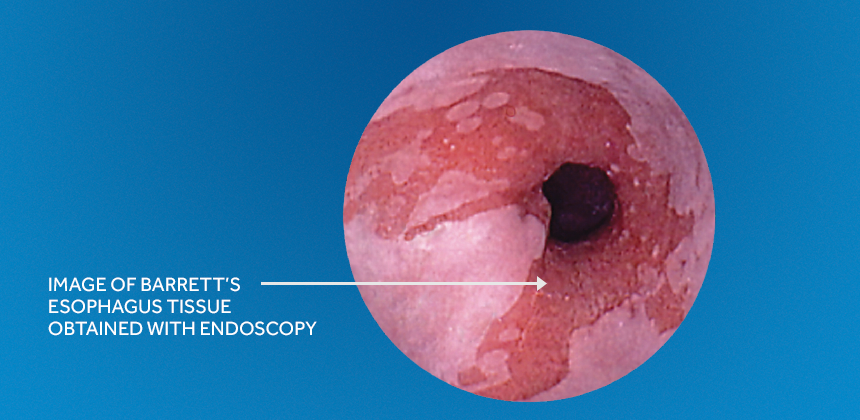Because it may eventually progress to esophageal adenocarcinoma, a type of esophageal cancer, early detection and treatment of Barrett’s esophagus is very important.

If you experience frequent symptoms associated with GERD, please talk with your doctor about the need for further testing. If left untreated, GERD may increase the risk for Barrett’s esophagus. Barrett’s esophagus is the primary risk factor for esophageal adenocarcinoma, a type of esophageal cancer.1-3
Diagnosis of Barrett’s esophagus requires two steps:
Endoscopy is a minimally invasive procedure that allows the physician to directly visualize esophageal tissue and may identify any abnormal tissue. The endoscope is a thin, flexible tube that is guided down the throat to inspect the esophagus and capture pictures of the tissue.
During the endoscopy, the physician may also perform a biopsy to collect a small tissue sample for further examination.
If you or a loved one are at risk for Barrett’s esophagus, find a physician and schedule an appointment today.
References: 1. De Jonge PJ, van Blankenstein M, Looman CW, Casparie MK, Meijer GA, Kuipers EJ. Risk of malignant progression in patients with Barrett’s oesophagus: a Dutch nationwide cohort study. Gut. 2010;59:1030-6. 2. Pohl H, Welch HG. The role of over diagnosis and reclassification in the marked increase of esophageal adenocarcinoma incidence. J Natl Cancer Inst. 2005;97:142-6. 3. Hvid-Jensen F, Pedersen L, Drewes AM, Sorensen HT, Funch-Jensen P. Incidence of adenocarcinoma among patients with Barrett’s esophagus. N Engl J Med. 2011;365:1375-83.